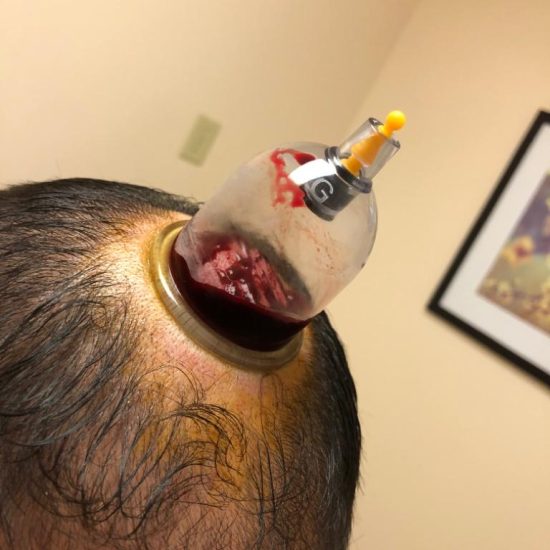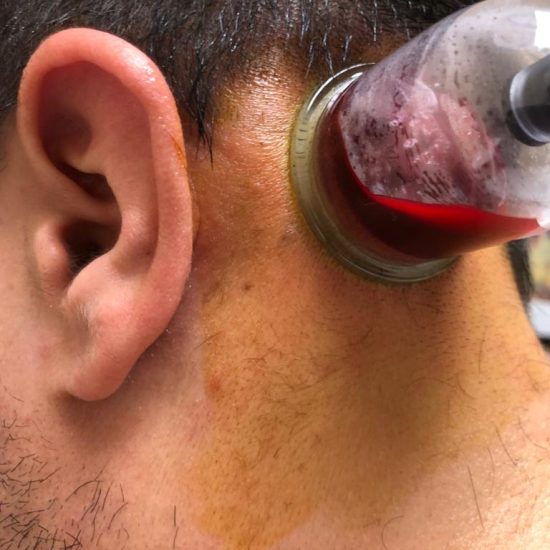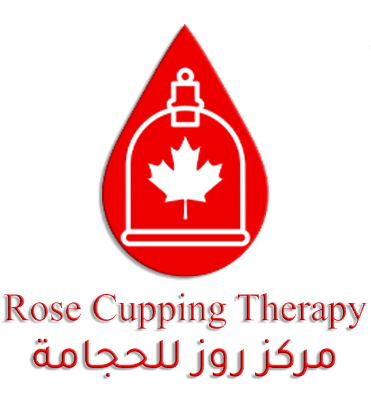The Benefits of Wet Cupping Therapy for Headaches and Migraines
Wet cupping therapy, also known as Hijama in Arabic medicine, involves applying special cups to specific points on the body. These cups create suction through heat or a mechanical pump, drawing the skin and underlying tissues upward. In the wet cupping variation, small incisions are made on the skin under the cups, allowing for the release of blood. This bloodletting is thought to remove toxins, stagnant blood, and waste products that could be contributing to discomfort or pain in the body.
How Wet Cupping Helps with Headaches and Migraines
Research-Backed Relief: The Science Behind Cupping for Migraines
While wet cupping (hijama) is an ancient therapeutic technique, a growing body of modern research now supports its effectiveness in treating headaches and migraines. Consequently, this traditional practice is gaining recognition in evidence-based medicine as a viable complementary therapy. Numerous studies demonstrate that **cupping for migraines**, including both wet and dry methods, can significantly reduce the frequency, duration, and intensity of headache episodes.
Clinical Evidence Supporting Cupping Therapy
For instance, a significant study published in the Journal of Pain Research in 2017 found that cupping therapy substantially reduced headache severity in individuals suffering from chronic tension-type headaches. Furthermore, another important study in the Journal of Complementary and Alternative Medicine in 2016 showed that cupping therapy effectively reduced both the frequency and intensity of migraines, particularly in patients who had previously struggled with conventional treatments.
The Implications for Holistic Migraine Management
These compelling findings strongly suggest that **cupping for migraines** can serve as a valuable complementary treatment for headache management. Therefore, it represents a promising alternative for those seeking holistic, non-pharmaceutical solutions to chronic head pain. Ultimately, this integration of ancient wisdom with modern research provides a powerful approach to migraine relief.
Licensed by the city of London – Approved by Middlesex-London Health Unit
Finding Relief: How Cupping for Migraines Targets Pain at its Source
Migraine pain can be debilitating, but many are finding powerful relief through an ancient practice. **Cupping for migraines** offers a holistic approach to managing and reducing the frequency of painful episodes. By targeting key underlying causes like poor circulation, muscle tension, and inflammation, this therapy provides a multi-faceted path to wellness. Let’s explore the science behind its effectiveness.
1. Improved Circulation and Blood Flow to the Brain
Firstly, one of the primary benefits of **cupping for migraines** is its powerful ability to enhance blood circulation. Poor circulation is a common contributor to headaches, as restricted blood flow to the brain can increase cranial pressure. Consequently, wet cupping creates suction that draws blood to the skin‘s surface, encouraging better overall flow to affected areas.
This increased circulation delivers vital oxygen and nutrients to tissues while alleviating pain. Therefore, for migraine sufferers, this process can significantly reduce both the intensity and frequency of their symptoms.
2. Release of Tension and Muscle Stiffness in Neck and Shoulders
Furthermore, tension headaches often originate from tightness in the neck, shoulders, and upper back due to stress or poor posture. **Cupping for migraines** directly addresses this by applying suction to these key areas. The technique encourages muscles to relax while promoting fresh blood flow to tense regions.
This release of muscle tightness can provide immediate headache relief and help prevent recurrence. Importantly, for migraine sufferers, reducing tension in these trigger areas may decrease both the likelihood and severity of attacks.
3. Detoxification and Removal of Stagnant Blood using Cupping for Migraines
Additionally, wet cupping aids the body’s detoxification process by removing stagnant blood and toxins that may contribute to headaches. This stagnant blood is believed to accumulate in certain areas, causing discomfort and inflammation. By facilitating its release, **cupping for migraines** helps cleanse the body and restore internal balance, potentially reducing headache frequency.
4. Balancing the Nervous System and Reducing Stress
Moreover, stress and anxiety are well-known migraine triggers that cause muscle tension and chemical imbalances in the brain. **Cupping for migraines** calms the nervous system, reducing stress levels and preventing stress-induced headaches. The therapy stimulates the parasympathetic nervous system, promoting deep relaxation that complements physical relief for comprehensive migraine management.
5. Reduction of Inflammation in Blood Vessels and Nerves
Chronic inflammation in blood vessels and nerves significantly contributes to migraine pain. **Cupping for migraines** reduces this inflammation by improving circulation and removing waste products from tissues. By alleviating inflammatory pressure in the head, this approach provides tangible relief from painful migraine episodes.
6. Cupping for Migraines – Improved Energy Flow and Qi Balance According to TCM
Finally, traditional Chinese medicine views migraines as imbalances in the body’s Qi (energy). **Cupping for migraines** restores Qi balance by releasing stagnant energy and promoting its free flow through meridians. By addressing these energetic blockages, this ancient practice may reduce migraine occurrence caused by such disruptions, offering a holistic path to relief.
How Cupping Therapy Benefits Migraines
How Cupping for Migraines Offers a Natural Path to Relief
Wet cupping therapy, or hijama, is an ancient practice rapidly gaining modern recognition for its ability to treat persistent headaches and migraines. This powerful, non-invasive approach provides a holistic alternative to conventional treatments, targeting the root causes of head pain rather than just masking symptoms. For those seeking sustainable relief, cupping for migraines presents a compelling solution backed by both tradition and growing scientific interest.
The Dual-Action Process: Suction and Release
The treatment involves a unique two-step process. First, a practitioner creates targeted suction on the skin using special cups, typically placed on the back, neck, and shoulders. This suction lifts the skin and underlying tissues, stimulating blood flow and loosening tight muscles. Subsequently, the practitioner makes tiny, precise incisions to allow for the controlled release of stagnant blood and toxins that may contribute to pain and inflammation.
Targeting the Root Causes of Migraine Pain
1. Enhancing Circulation to Relieve Cranial Pressure
This approach proves particularly effective in improving blood circulation, a crucial factor in both tension headaches and migraines. Poor circulation to the brain can increase intracranial pressure, significantly contributing to headache onset. By enhancing blood flow, cupping for migraines effectively relieves this pressure, reducing both the frequency and intensity of episodes.
2. Releasing Muscle Tension in Key Trigger Areas
Furthermore, the therapy specifically targets muscle tension in the neck, shoulders, and upper back—common areas of tightness that trigger headaches. The suction from the cups helps loosen these muscles effectively, relieving stiffness and reducing the discomfort that often leads to headaches. For migraine sufferers, releasing tension in these trigger zones can prevent the onset of full-blown attacks.
3. Promoting Detoxification and Reducing Inflammation
Additionally, wet cupping promotes comprehensive detoxification by removing metabolic waste and stagnant blood from the body. These substances can contribute to inflammation and pain throughout the system. The bloodletting process helps cleanse the body thoroughly, improving overall circulation and reducing headache frequency through decreased inflammatory responses.
4. Calming the Nervous System and Reducing Stress
For those suffering from stress-induced migraines, wet cupping delivers significant neurological benefits. The therapy activates the parasympathetic nervous system, which helps the body enter a state of relaxation and recovery. By reducing stress—a common migraine trigger—cupping for migraines offers both emotional and physical relief, addressing the mind-body connection of chronic pain.
5. Restoring Energetic Balance According to TCM Principles
From the perspective of traditional Chinese medicine, wet cupping helps restore balance to the body’s Qi (vital energy). Practitioners believe that energy blockages along the body’s meridians can manifest as pain, including migraines. By addressing these blockages, hijama treatments can alleviate the energetic imbalances that contribute to chronic headache conditions.
A Comprehensive Approach to Migraine Management
Ultimately, wet cupping offers a holistic, multifaceted approach to treating headaches and migraines. Rather than simply addressing isolated symptoms, it works synergistically with the body’s natural healing processes to create lasting relief. This makes it an increasingly valuable therapy for those seeking natural alternatives to pharmaceutical interventions, providing a path to wellness that honors both ancient wisdom and modern understanding of pain management.




